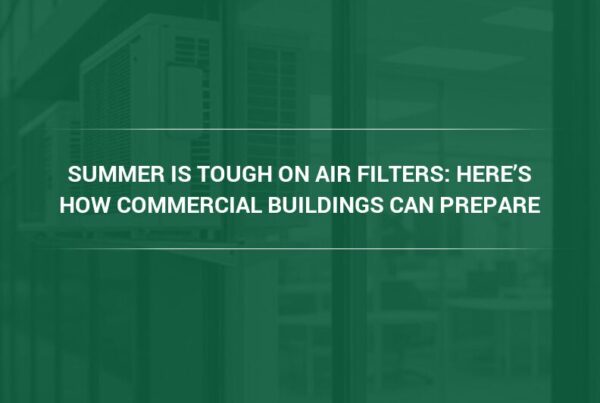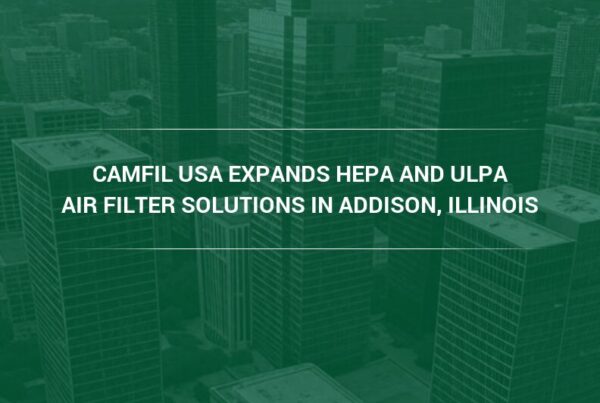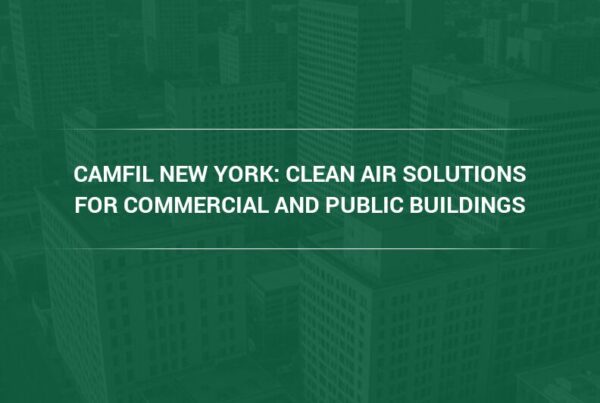Learn about the risks posed by atmospheric viruses on outdoor and indoor air quality, and how commercial air filtration systems can remove these contaminants.
While much has been said about the air inside public transport, schools and hospitals being full of biological contaminants like germs and viruses from people, a recent study notes that there is also a surprisingly large number of viruses in the atmosphere and that, worse, they are falling from the sky. The study is the first to quantify the viruses being carried into the troposphere, above the planet’s weather systems but below the stratosphere where planes fly at cruising altitude, highlighting the critical role played by commercial air filtration systems.
According to the research team composed of scientists from the United States, Canada and Spain, these viruses are swept up from the ground and transported thousands of miles from their place of origin, before being deposited back onto the surface of the Earth.
According to University of British Columbia virologist Curtis Suttle, one of the senior authors of the research paper published in the January 2018 issue of the International Society for Microbial Ecology Journal, over 800 million viruses fall down on every square meter (11 square feet) of the planetary boundary layer on a daily basis—the equivalent of 25 viruses for every person in Canada.
The Problems Posed by Biological Contaminants on Indoor Air Quality
According to the researchers, the viruses and bacteria are pushed into the atmosphere in small particles from sea spray and soil particles. These particles eventually fall back down and enter homes and buildings, affecting indoor air quality.
Sutter and his colleagues, however, wanted to know exactly how much of this material is being carried up into the atmosphere, specifically, above 2,500 to 3,000 meters, or roughly 10,000 feet above sea level. At this altitude, these liquid and solid particles can travel thousands of miles, unlike particles in the lower layer of the atmosphere, which tend to stay within an immediate locality.
Gathering air quality data from platform sites atop the Sierra Nevada Mountains in Spain, the researchers found billions of viruses and millions of bacteria deposited per square meter every day. Furthermore, the deposition rates for viruses were at least nine to 461 times greater than those for bacteria. The bacteria and viruses are deposited back onto the Earth’s surface through rain or dust intrusions from the Sahara—the rain, however, was less effective than previously thought, at removing viruses from the upper atmosphere.
The research team also discovered that the majority of viruses in the atmosphere bore signs of being swept up into the air by sea spray. The viruses and bacteria attach themselves to smaller and lighter organic particles, which effectively allowed them to stay airborne for much longer.
Capturing Viruses and Bacteria with Commercial Air Filters
Viruses are just one of many biological contaminants that pose health risks for the occupants of homes and buildings. In fact, the EPA recommends the use of proper-strength commercial air filters to maintain higher indoor air quality and assist in removing contaminants such as:
- Bacteria
- Viruses
- House dust
- Pollen
- Animal dander
- Cat saliva
- Cockroach droppings
- Mites
- Rat and mice urine
“The challenge for home and building owners are keeping an eye on the countless sources of these pollutants,” explained Camfil USA’s Charlie Seyffer, Manager of Marketing & Technical Materials for commercial air filters and 37-year ASHRAE member and active committee participant. “This makes monitoring the presence of biological pollutants in indoor spaces extremely difficult.”
Common sources of biological pollutants include:
- Plants, which produce allergy-causing pollen
- People, animals, and pests, all of which carry bacteria and viruses
- Household pests, which produce animal dander and saliva
- Pests, which produce urine
- Heating, ventilation, and air conditioning (HVAC) systems, which can turn into the perfect breeding environment for mold and mildew when left unclean. When air passes through the HVAC unit to be heated or cooled, it carries with it the mold and mildew spores in the ductwork.
And, because of the difficulty of identifying the presence of biological contaminants in the air, it can be hard to take preventive action. The most practical solution is to first determine if the current HVAC system is capable of handling the greater size and resistance of high-efficiency air filters. If not, the next step would be to consider adding a stand-alone air purification system. In either case, seek out and remove the source of these pollutants or prevent them from growing.
Where Industrial Air Filtration Can Be a Factor
To prevent the buildup of biological contaminants inside, say, a crowded school, an airport, or a hospital, the building must be ventilated to ensure that indoor air containing pollutants are released outside. But this also introduces another problem—dirty outside air with high levels of air pollution like smoke, industrial runoff, and, as the researchers learned, even more biological contaminants. This is a problem that industrial and commercial air filtration systems are designed to solve.
“High efficiency air filters can be installed in HVAC systems, filtering out biological pollutants and particulate matter carried by the airstream, preventing them from recirculating back into the room,” said Seyffer,. “As unfiltered air flows through the HVAC unit’s ductwork, the air filter captures and holds the airborne pollutants.”
The Ability of Commercial HEPA Filters to Remove Bacteria and Viruses
Since the 1940s, commercial HEPA filters have been used across a wide range of nuclear plants, healthcare facilities and life sciences applications, controlling the spread of airborne particles and organisms such as viruses and bacteria. However, assuming the existing HVAC system is capable of handling the additional stress to the system, care must be taken when choosing a HEPA filter for the purpose of controlling the smallest of all airborne pollutants. Many products labeled as HEPA filters are essentially “HEPA-like” as opposed to tested and certified HEPA filters.
True high-efficiency particulate air (HEPA) filters most commonly are rated by test methods that begin with a minimum capture efficiency of 99.97 percent of particles larger than 0.3 microns in diameter. Bacteria and viruses are often smaller than that but as mentioned earlier, typically attach themselves to larger particles. It’s also important to understand HEPA filters do not actively kill living organisms. They capture and hold them within the matrix of the filter.
Getting the Best Out of Industrial HEPA Air Filtration Systems
While industrial HEPA air filtration systems are a tried and proven way to capture and remove biological contaminants in indoor environments, going out of your way to minimize the sources of these pollutants, or at the very least, discourage their growth, goes a long way toward maximizing the performance of these air filters.
For example, you can discourage the growth of mold and mildew by cleaning up pooling water or areas with high-moisture content—think bathrooms or basements where a leaking pipe could cause black mold to grow. For pet dander, on the other hand, you can take your pet regularly to a groomer or brush its hair outside. For pests like rats, mice and roaches, a comprehensive pest control program is the best way to remove them from the building.
To learn more about Camfil US commercial air filtration systems for the control of biological pollutants, talk to Camfil USA. Our team can assess your building’s containment needs and recommend the best air filter for the job. You can also explore our product line to learn the benefits of air filters for indoor air quality.
If you are located in Canada, explore our Canadian website for commercial air filtration.
Camfil US
Camfil Canada
T: 888.599.6620
E: Lynne.Laake@camfil.com
F: Friend Camfil USA on Facebook
T: Follow Camfil USA on Twitter



